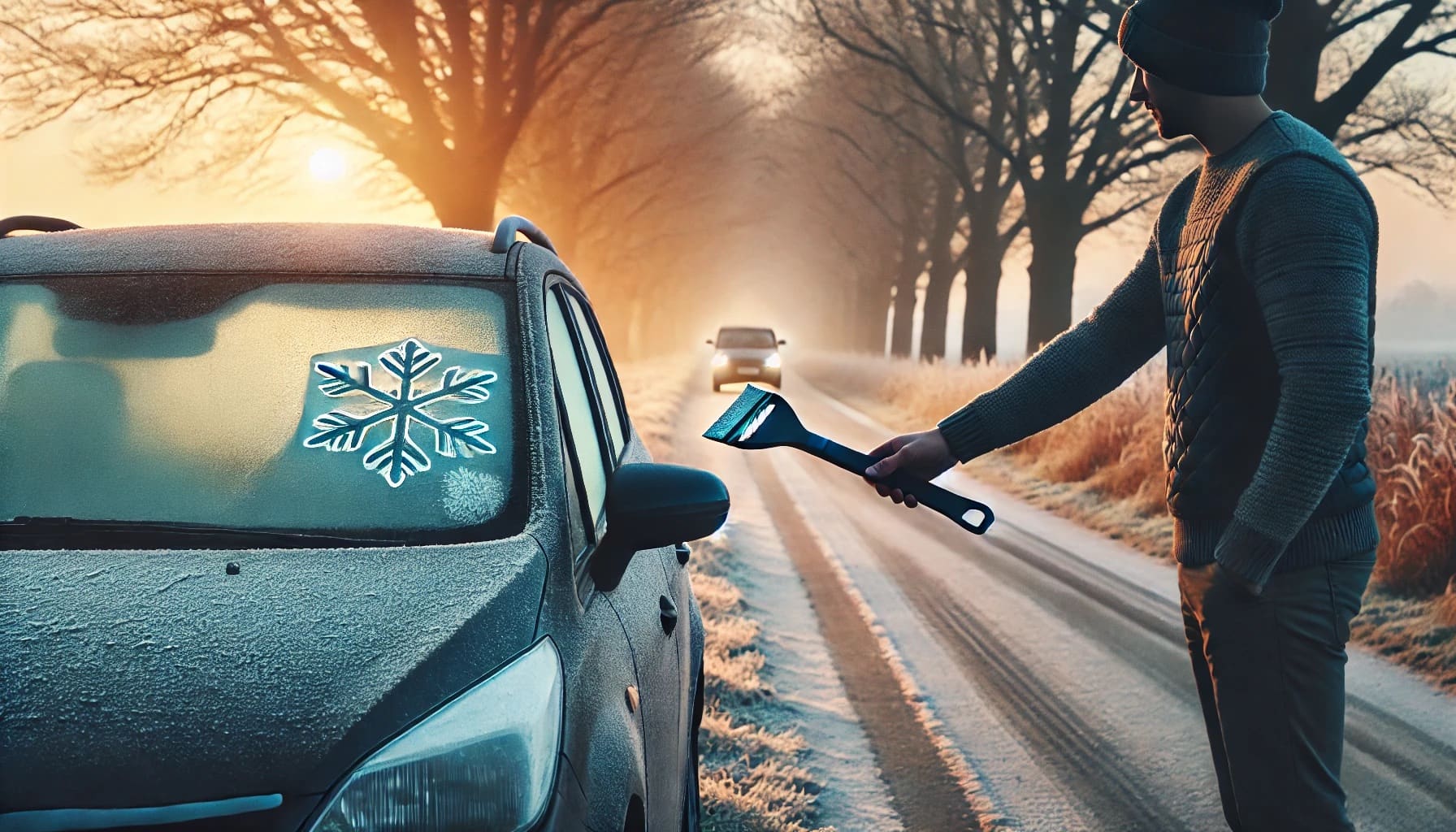As autumn transitions to winter, frosty mornings become a common occurrence. While these chilly starts to the day may be picturesque, they also present unique challenges for drivers. In this final installment of our “Autumn Hazards on the Road” series, we’ll explore how to navigate frosty conditions safely and keep your vehicle in top shape.
Why Frosty Mornings Are a Hazard
When temperatures dip overnight, frost can form on your car’s windows and on the roads, creating slick surfaces and reducing visibility. Drivers must adjust their routines and driving habits to account for these conditions.
Key Risk Factors
- Reduced Visibility: Frosted windows obscure your view and require time to clear before driving.
- Black Ice: Frosty mornings often coincide with the formation of black ice, especially on bridges, overpasses, and shaded areas.
- Cold Tires: Tires lose elasticity and traction in colder temperatures, increasing stopping distances.
Preparing for Frosty Weather
1. Clear Your Windows Thoroughly
Before you hit the road, take the time to clear frost and ice from all windows, mirrors, and lights. Use an ice scraper or de-icer spray and allow your vehicle to warm up for a few minutes. Never drive with partially cleared windows, as it significantly limits your visibility.
2. Check Your Tires
- Monitor Tire Pressure: Cold weather causes tire pressure to drop, so check it regularly and inflate to the manufacturer’s recommended levels.
- Inspect Tread Depth: Good tread is essential for gripping icy roads. If your tread is worn, consider replacing your tires or switching to winter tires.
3. Use Proper Wiper Fluid
Ensure your washer fluid is rated for freezing temperatures. Regular water-based solutions can freeze, leaving you unable to clear your windshield while driving.
4. Test Your Battery
Cold mornings can strain your car’s battery. Have it tested to ensure it holds a full charge, and replace it if necessary to avoid being stranded.
Driving Tips for Frosty Conditions
1. Reduce Your Speed
Lower speeds give you more time to react if you encounter slippery conditions or reduced visibility. Always drive cautiously when frost or black ice is present.
2. Avoid Sudden Movements
Smooth and gradual movements with your steering, acceleration, and braking help maintain control on icy surfaces. Sudden actions can cause skidding.
3. Increase Following Distance
Leave extra space between your vehicle and the one in front of you. Stopping distances are significantly longer on frosty or icy roads.
4. Be Cautious on Bridges and Overpasses
These areas freeze faster than regular roads due to cold air circulating above and below. Approach them slowly and avoid abrupt actions.
Emergency Kit Essentials for Frosty Mornings
Prepare for unexpected delays or breakdowns by keeping an emergency kit in your vehicle. Include:
- Ice scraper and snow brush
- Blanket and warm clothing
- Jumper cables
- Flashlight with extra batteries
- Non-perishable snacks and bottled water
- Tire repair kit or spare tire
Conclusion: Stay Frost-Free and Safe
Frosty mornings may be a hallmark of the changing seasons, but they don’t have to be a source of stress. By preparing your vehicle and driving carefully, you can safely navigate the challenges that chilly weather brings.
Thank you for joining us throughout the “Autumn Hazards on the Road” series. If you or someone you know has been involved in a weather-related accident, Stillman & Friedland Attorneys are here to assist. Call our Nashville office at 615-244-2111 for a free consultation or reach out through our live chat or online contact form.
Because we care…
Stillman and Friedland







